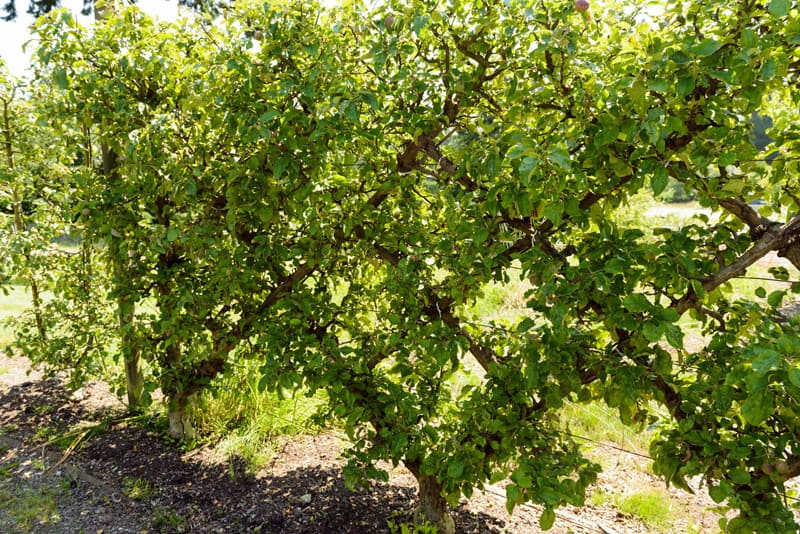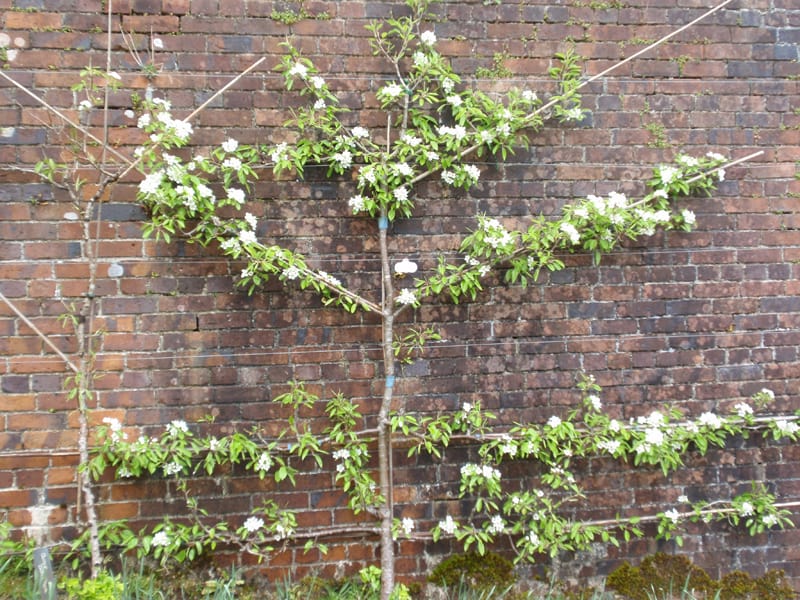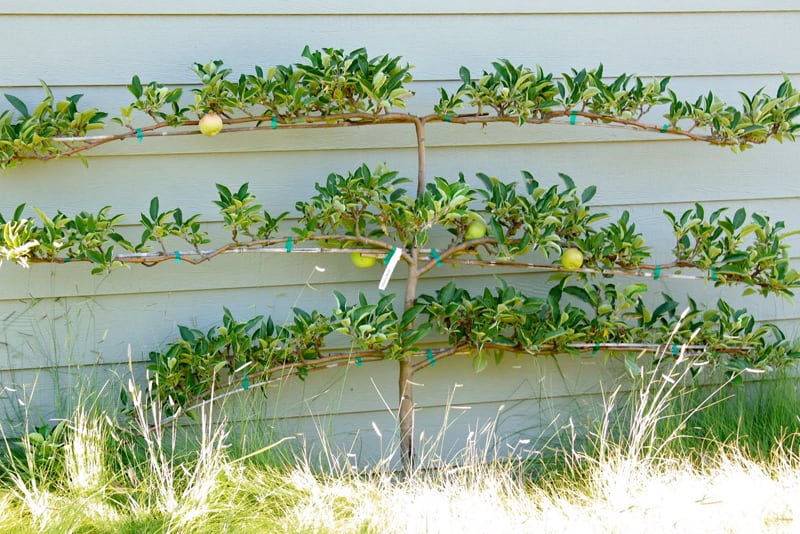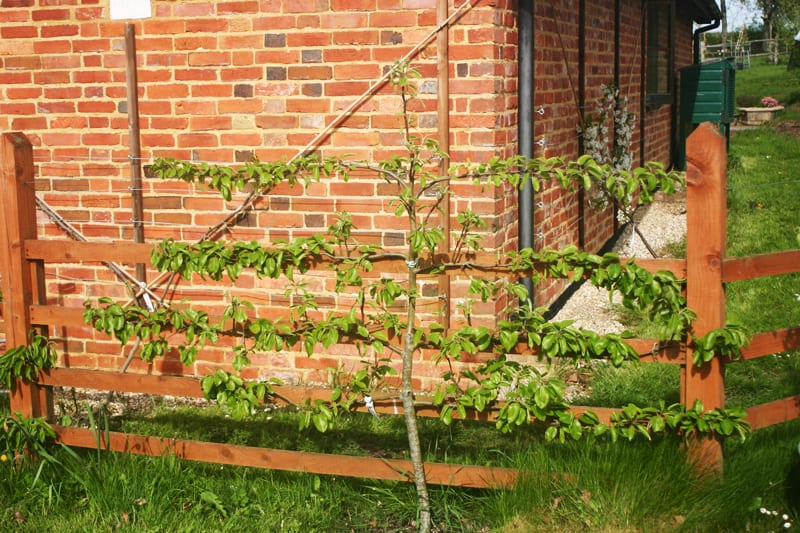Espaliered trees bring fruit down to eye level. They allow for easy picking and take advantage of small spaces.Growing fruit trees flat against a wall or along a wire is a great way to grow a lot of fruit in a small space. Espalier tree training is an age-old art originating in Europe where very old espalier fruit trees can be found growing on brick and plaster walls. This method of tree training is becoming popular with New Zealand gardeners keen to create an attractive formal feature or grow more fruit in limited space. Espalier (es-PAL-yer or es-pal-YAY) is a method of training trees to grow in two dimensions in an ornamental design, often against a wall.
What are Espalier Fruit Trees?
Espalier is the horticultural and ancient agricultural practice of controlling woody plant growth for the production of fruit, by pruning and tying branches to a frame, frequently in formal patterns, flat against a structure such as a wall, fence, or trellis, and also plants which have been shaped in this way. The art of espalier is when you use a tree pruner to train trees and branches to be on one plane. They’re commonly found up against a wall or fence.
Espalier trees are often grown against a wall, traditionally brick or plaster. Alternatively, they can be supported by a strong post and wire structure. This creates a part-wall, perfect for dividing areas of a garden while still retaining sunlight and visibility.
A tree that’s flat rather than round might sound odd, but espaliered trees were and are considered living art. In espalier, tree branches are typically trained flat along the wires of a trellis, which may be of several types, depending on how difficult an espalier project you want to attempt. In addition to a trellis, trees can be supported by a wall, wooden fence, or deer or cattle fencing.
Plant fruit trees to make your garden complete!
Fruit trees, with the right training, can bring a sense of structure into small spaces as well as a delicious harvest!
There’s something infinitely satisfying about growing your own food. Homegrown fruits are better than those bought from the shop. Fresh fruits have all the healthful vitamins and antioxidants; they lose many nutrients during transport and storage. One great thing about growing fruit is that you can eat it straight from the tree. Apple and pear are the usual choices. Apple trees are a little easier because new stems don’t harden as quickly as pear trees, and are therefore a little more forgiving when you go to bend them toward your support wires. Peaches and pomegranates also espalier well. You can try your hand at espaliering any variety of fruit tree, as long as the fruit tree suits your climate, but dwarf or semi-dwarf trees are best for small spaces.
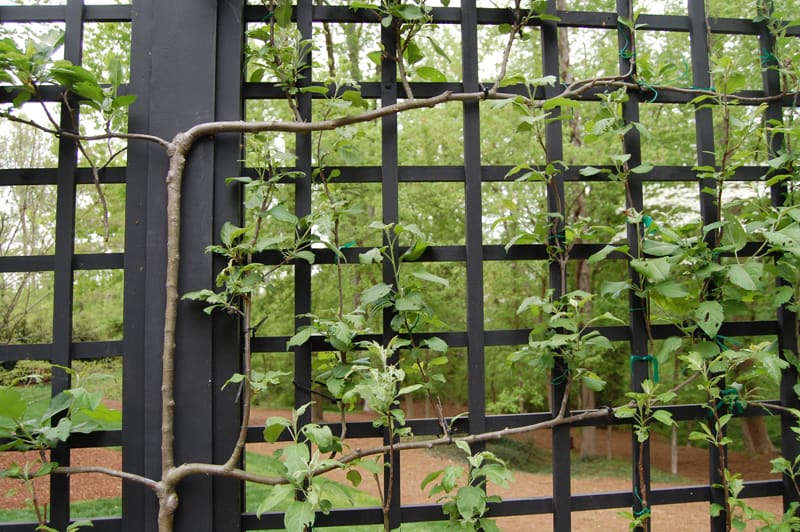
Want to grow fruit trees in minimal space? Here are some benefits why you should try espalier:
1. Espalier fruit trees are a great way to save space and have fresh home-grown fruit too!
2. Homegrown fruit from a narrow space
3. Very easy picking, no ladder needed
4. A striking bit of garden artistry that will have your neighbors talking
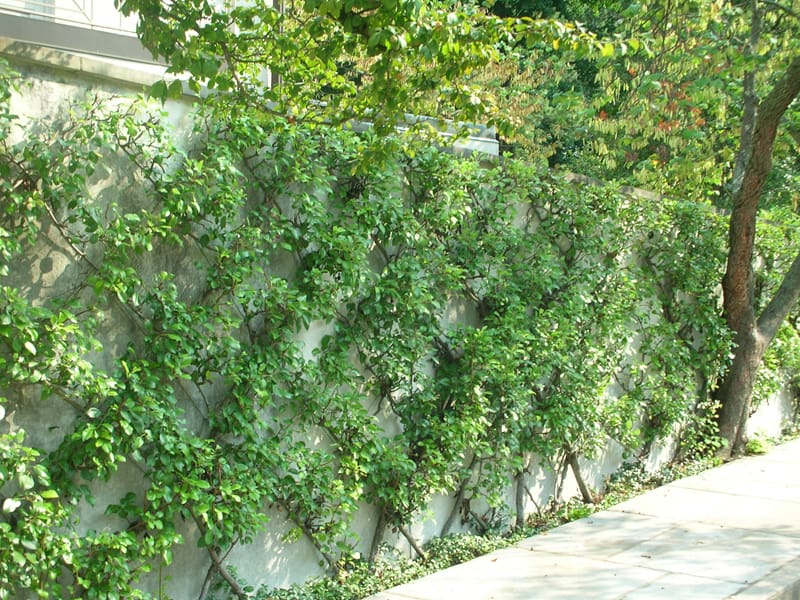
Getting started with your own espalier fruit tree
To begin the process, plant your tree 6-10 inches from a wall or fence. If your tree is bordering a walkway, you will need to build or purchase a frame trellis and train your tree’s young branches to it.
1. Decide on a pattern to suit the type of fruit tree you are growing.
Espaliers are essentially trees flattened into 2D, with horizontal branches growing either side of the vertical trunk. There are two or more tiers, typically spaced around 16in (40cm) apart, with each pair of branches trained along a wire. They can be free-standing or against a wall. Apples and pears take very well to espalier training. A stepover is a single-tiered espalier, forming a T-shape 12-16in (30-40cm) above ground level.
2. Choose a sunny location. Most fruit trees need a minimum of six hours of direct sunlight.
Branches that grow horizontally produce more fruit. An espalier tree may not produce as much fruit as a 3-D tree, but it still produces a lot. Most fruit trees require a lot of care. Be prepared to apply dormant spray once or twice during winter as a preventative measure, to keep an eye out for pest and disease issues, and to treat them. Many organic solutions for treatment are available.
4. Prepare the support.
You will need to fix wires to a structure that will support your espalier. These will be used to train the branches at desired angles. Wires can be spaced 30cm to 60cm apart. With fences and walls, fix the wires using eyebolts to keep the plant away from the structure and allow air flow behind the plant. Using turnbuckles to keep the wires taut is recommended.
Set the plant in the ground about 30cm from the wall to allow room for root growth.
Use soft cloth (like strips of tee shirt fabric) to tie the branches, making sure the end 20cm of horizontal branches is left untied otherwise the growth will slow or cease.
For more info, please visit gogardening.co.nz and hgtv.com

